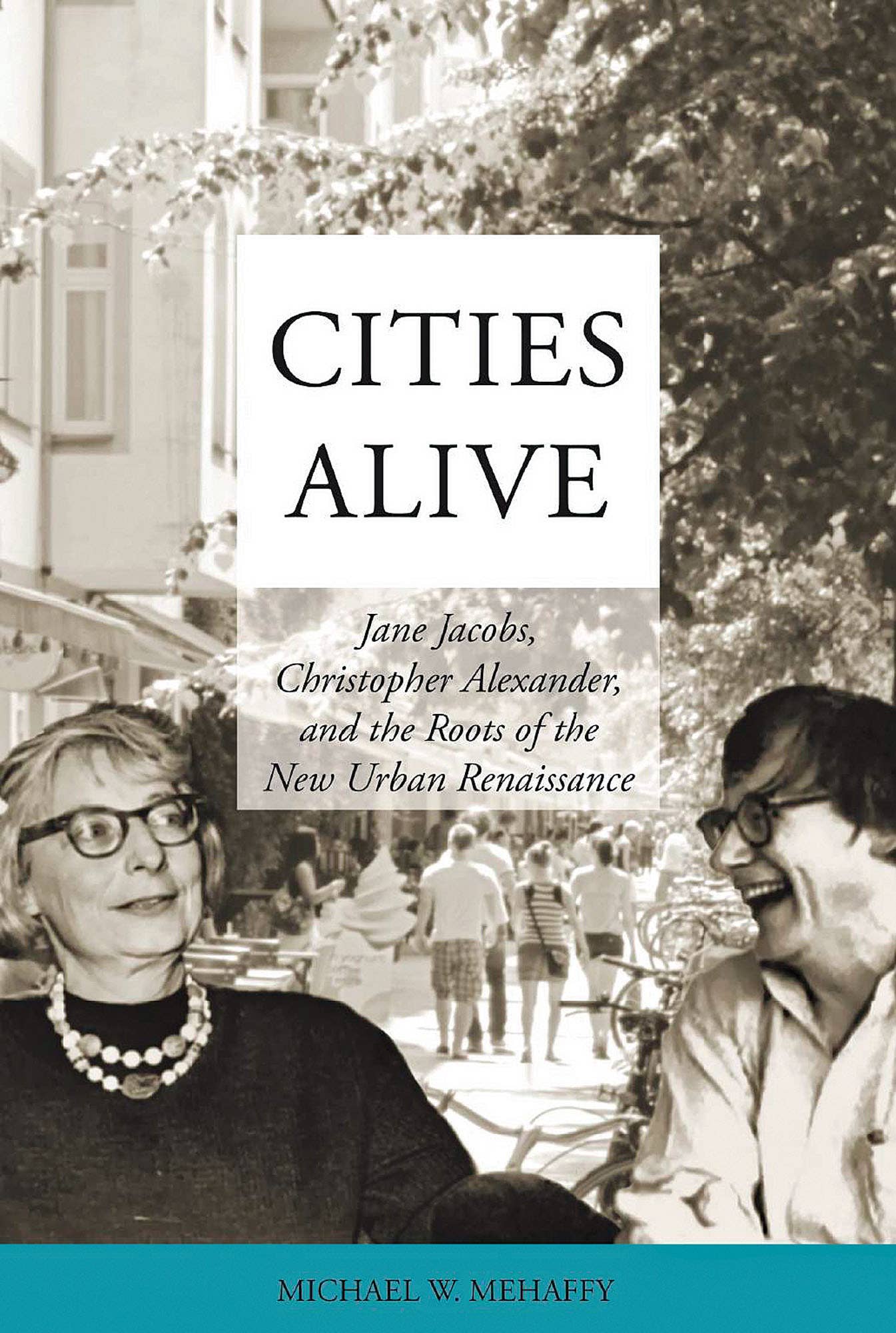
Features
Book Review: Cities Alive
By Michael W. Mehaffy
Sustasis Press, Sustasis Foundation, Portland, OR
Paperback; various color photos & illustrations;
290 pages; $19.95
ISBN: 978-0-9893469-9-3
As an Amazon Associate, we earn from qualifying purchases made through affiliate links.
Cities are undergoing a renaissance; what was once an American lean toward suburban sprawl, the U.S. is now experiencing a rebirth of many of its cities. Michael Mehaffy’s new book, Cities Alive, explores why this rejuvenation is happening—“because we’ve begun to understand how they really work—and what they will need to work better in the years ahead.”
The premise of the book discusses two main heavyweights who have helped shape this resurgence—American-Canadian urbanist Jane Jacobs and the English-American architect Christopher Alexander, both whose significant insights have formed multiple generations of professionals, scholars and activists alike. Mehaffy takes us on a journey of where Jacobs’ and Alexander’s lines of thought run parallel and intersect.
When cities are spoken of throughout the book, Mehaffy is not only referring to the vast compressed cores of major metropolises but also to smaller cities and towns. He tackles tough topics like “Why cities are the problem, but cities are the answer too,” systems reform, diverse opportunities, connectivity, environmental sustainability, pattern languages, threats and more. Points are often illuminated by references to Jacobs’ and Alexander’s published pieces and sometimes illustrated by photos, charts or diagrams to further drive home key elements.
The book is divided into five main sections, the first two covering Jane Jacobs and Christopher Alexander, respectively. Sections three and four delve in to philosophical roots, mereology and the structuralist renaissance, as well as opportunities and threats, including the New Urban Agenda, “artistic sprawl” and more. The book closes with the fifth section discussing fundamental lessons and optimistic examples.
Overall, Cities Alive features a comprehensive view of city structure, what works and what doesn’t, and most importantly, how we can make it better. At the back of the book, you’ll find references and suggestions for further reading, plus a detailed index. What’s most remarkable is that in the latter half, Mehaffy pulls from his curated pot of somewhat rather abstract ideas, garnered from Jacobs and Alexander, and transforms them into solutions that can be implemented in very tangible, realistic ways.
The problems are not just with the city structures but also of issues on a much deeper level. Mehaffy states, “In all of our current challenges, cities—again, in the broad sense of urban settlements—loom very large. It is within the structures of these urban settlements that we consume, interact, create, and ultimately generate the impacts that now prompt such growing concern. But it is also within them that we develop as human beings and as a species—that we create, innovate, adapt and problem-solve. It is in these settlements that we create a civic framework by which we may work together on shared opportunities and challenges.”
He also adamantly argues the reawakening is still in its adolescence form with more work needing to be “done to achieve its promise—especially in an age of rapid, often sprawling urbanization.”
He warns, “I will argue that this renaissance is, in fact, a transformation in the way we think of beauty, of quality, and of life. It is a determined mastery of the technological abstractions that are, on the one hand, our powerful agents, but if we are not careful—and we have not been nearly careful enough—our destructive masters.”
An alluring and thought-provoking read for students, government officials, architecture professionals and more, Cities Alive will have you nodding your head as you read along, offering an intricate and intelligible understanding of city structure as it examines essential philosophical ideas about cities and what they offer their inhabitants. Hint: It’s so much more than you can rattle off the top of your head.
An urbanist and design theorist, author Michael W. Mehaffy, Ph.D., is the executive director of Portland, Oregon-based Sustasis Foundation, editor of Sustasis Press and currently has appointments in teaching and/or research in seven graduate universities in six countries and three disciplines (architecture, urban planning and philosophy).
A distinguished scholar on both Jane Jacobs and Christopher Alexander, Mehaffy has also acted as a consultant to UN-Habitat on the development of the outcome document of Habitat III, the New Urban Agenda, a historic United Nations agreement emphasizing the pivotal role of cities and towns in meeting the challenges of the future, which has been adopted by consensus by all 193 member states of the United Nations. As discussed in the book, Jacobs and Alexander were monumental in formulating conceptual insights behind the New Urban Agenda and whose teachings continue to offer guidance as we forge ahead.
Mehaffy says, “Both authors leave us today free to test their ideas, to falsify, modify, combine with others—and then, if we find them useful, proceed to apply the ideas constructively, or alternatively, revise them as needed. Both authors have frequently urged us to follow an evidence-based approach, and continue the journey of learning and growth.” He points out that their teachings have “offered us a useful roadmap” and now it’s up to us to decide which way to go.









